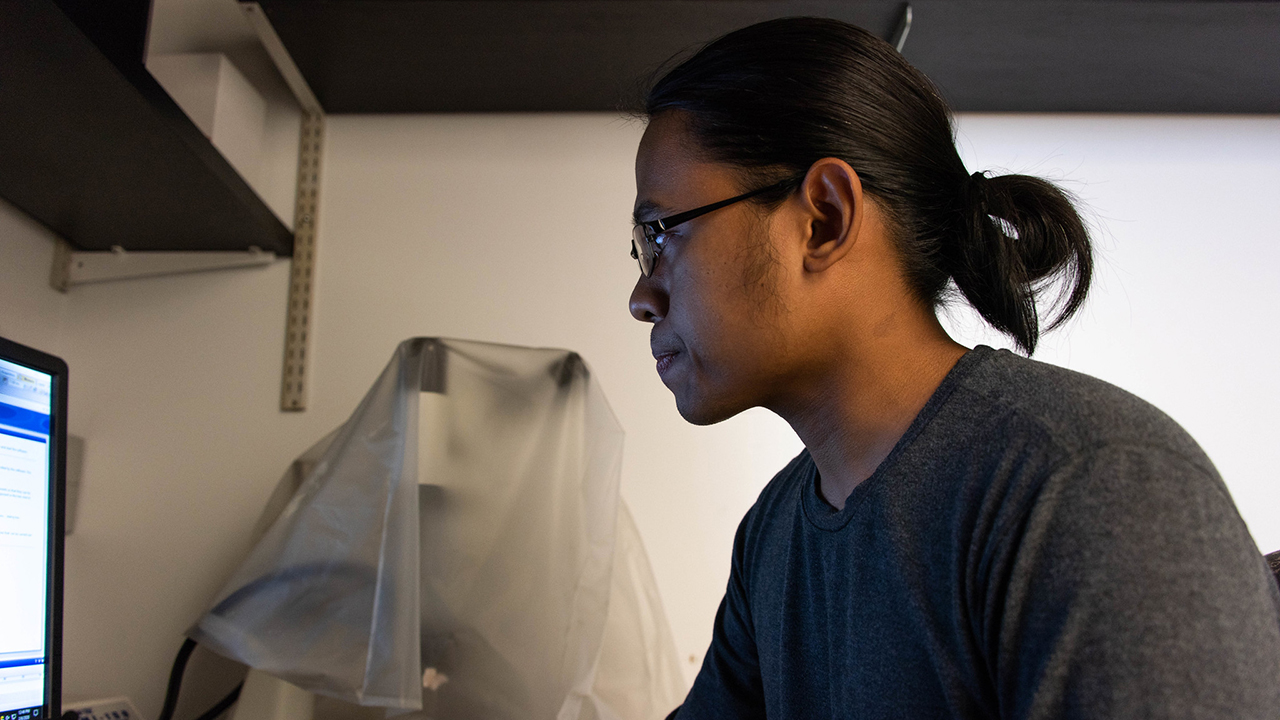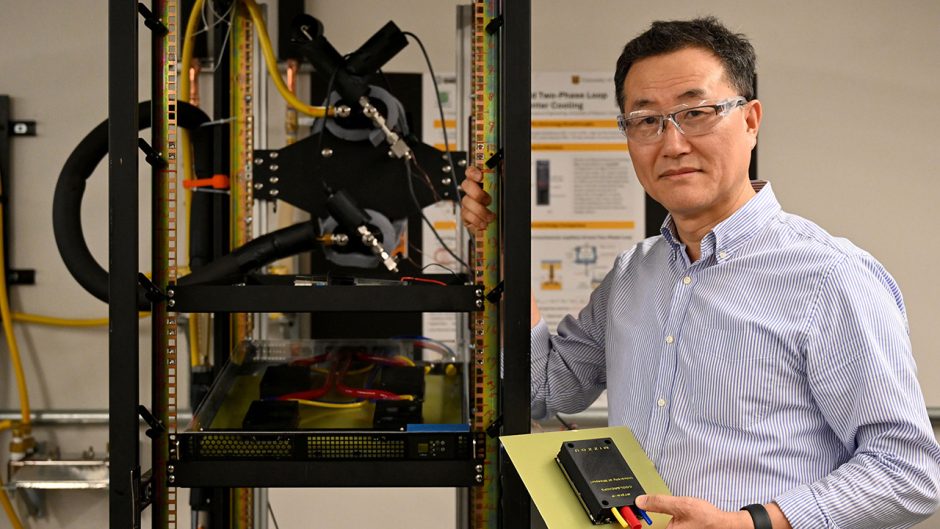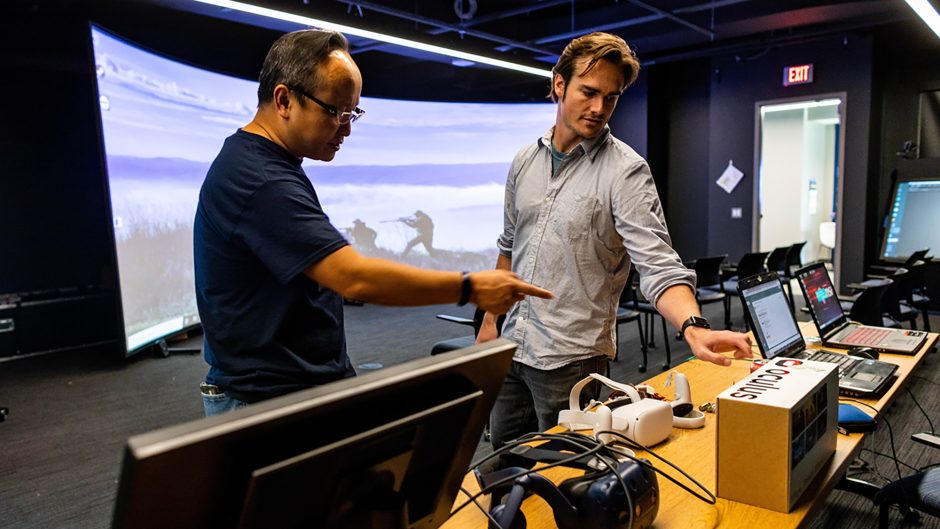
Janlo Robil, a graduate student in the Bond Life Sciences Center, came up with the GrasVIQ project after he finished a project that required him to count hundreds of plant leaf veins.
June 28, 2021
It’s not surprising that researchers feel discouraged when pursuing projects that involve plant leaf vein density analysis. Manually counting individual leaf veins and measuring their density to understand how nutrients are transported in plants can take weeks of tedious work.
Now, researchers can cut that time down to just minutes.
As part of the Bioinformatics in Plant Sciences (BIPS) program, undergraduate and graduate students in plant sciences and computer science have come together to create the first phenotype image analysis system for monocot plant leaf veins called, GrasVIQ.
The GrasVIQ software can process photos of grass leaves, automatically detect and count vertical grass leaf veins and calculate various quantitative measurements such as vein density, width and separation. These measurements help analyze leaf vein network patterns.
“The time that you use for collecting data, you can already use for analysis,” said Janlo Robil, a graduate student in the Bond Life Sciences Center. “It will also help you in your decision about the direction of your research because the faster you get the data, then the better idea you have if you still need to pursue this or not.”
While the software saves plant science researchers time and energy, it also provides computer science students something as well.
“Collaborating with plant scientists gives us the opportunity to leverage our expertise in engineering, algorithm development and mathematical models to contribute to the solution of a real-world problem,” said Ke Gao, graduate student in the Electrical Engineering and Computer Science Department.
Now that the software is off the ground, the team is looking toward the future. They hope to improve vein classification and create a more user-friendly interface for researchers.




